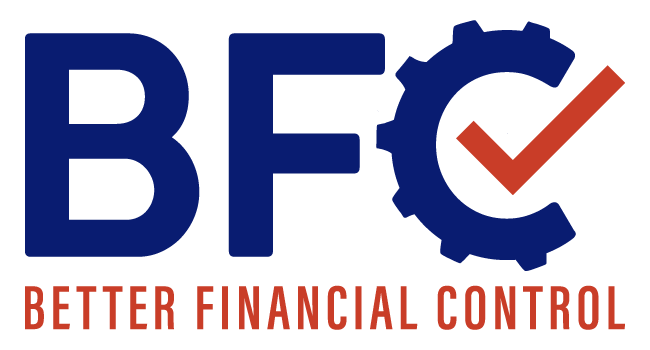When you take the time to organise your business, you not only improve its functionality, you can also save time and money, increase productivity and optimise profitability.
As I have discussed in the previous blogs of this series, a disorganised business can become a self-destructive machine and its own greatest hurdle to success.
In week one, we identified whether or not a business was problematic; last week we explored the repercussions of these issues.
Today, we look at solutions.
Let me begin by stating that to effectively organise your business it takes time and effort; it is a process that simply can’t happen overnight.
However, by setting aside the few hours it will take, you will save yourself time exponentially, creating a far more efficient business that continues to steadily improve week over week.
You will now know whether or not your business is healthy, you will understand the problems and the implications they have. Now, let’s organise your business in five easy steps:
How to Organise Your Business & Make it More Presentable
Step 1 – Re-Clarify Your ‘Why’ (60 Minutes and 1-2 glasses of red wine)
This concept isn’t new but it is often misunderstood.
We have a tendency to think that ‘why’ we want to grow our business and make it more profitable is self-evident – but it isn’t! Why you need your business to be more profitable will be different to another business owner or manager, depending on business type, current size and personal perspective. In fact, this ‘why’ is so different from person to person that after 25-plus years of trying anticipate a person’s ‘why’, I’ve officially stopped trying to guess because I’m wrong 98 percent of the time!
The reason you want to be clear on your ‘why’ is because that is where your greatest strength lies. You need sustained energy and tenacity to grow a consistently highly-profitable company. Show me a flat company and I’ll show you a leader who has lost their ‘why’. When you are thinking through your ‘why’ remember that you will likely be far more passionate about doing something for someone other than yourself, so watch for that thread when clarifying your ‘why’.
Assign an absolute maximum of 60 minutes to completing this task. Revisit your Vision Statement for where you want your company to go and why. Do the same for your Mission Statement, which is basically how you intend to use your product or service to get to your vision target. Finally, identify the three to seven qualities you most like in people you work with, which will reflect your company’s Core Values.
A quick hack on core values is to utilise Patrick Lencioni’s work. He identified that the qualities of Humble, Hungry and Smart are consistently found in great team players. You can see his descriptive and informative video on this here. Over time you can use more descriptive words, but in all likelihood they will be derivatives of those three core values.
Step 2 – Identify Your Top 5 Company Performance Numbers (60 Minutes)
Don’t over think this. Imagine you are cut off from communications with anyone at your company but you can receive five numbers each week to monitor how your company is performing. What would those five numbers be? Typically, it will include a number defining ‘new opportunities’ our leads, a number about your sales pipeline, and a number representing actual closed sales. Often a number on recognised revenue may be included, but that depends on your type of business. Finally, a number explaining customer satisfaction or employee safety may be added – again, depending on business type.
As you are seeing, these are not the typical Profit and Loss numbers your accountant may more readily submit to you. Although your profit and loss statistics are important, they are often non-specific to your company’s functionality and don’t help you understand how your business is performing now – not to mention how it will likely be performing over the next few months. Your five numbers should provide a snapshot of the current health of your business and a sense of where things are headed.
Next, you need to figure out how you will obtain and review these five numbers each week. This may take some work but it will prove incredibly valuable in the longer term.
Step 3 – Begin Having Real Weekly Meetings Focused on Company Performance (60-90 minutes per week but should replace any existing management-type meetings)
You are now ready to have a real weekly company performance meeting with your key people. Schedule a weekly meeting of about 60-90 minutes where the agenda is consistent and focused on three things:
- Reviewing the Top Five performance numbers and identifying any issues
- Sharing any relevant customer or employee headlines to keep key players informed
- Identifying, discussing and resolving for any identified problems (or opportunities) the company is facing.
- Then monitor the execution of those identified tasks to ensure that they are effectively implemented until completion.
Over time, this meeting will change how your company operates and highlight the effectiveness of individual team members. Within a month your team will begin to experience a shift in accountability and focus without the need for new strategies.
Step 4 – implement a Quarterly Day-Long Meeting (6-8 Hours each quarter).
After about a month of these regular weekly meetings you will be ready to develop greater clarity for the company and team. In a day-long meeting, begin by identifying a set of 12-month goals. This should include financial numbers as an objective success measurement, but also highlight company improvement goals in the areas of:
- Team development
- Key process improvements
- Specific technology enhancements.
From here, identify what specific improvements you need to achieve over the 90 days in order to be on track to accomplish the 12-month targets.
Step 5 – Update Your Company’s Structure (3-4 hours)
Most companies’ organisational charts begin with people and are completed with people in mind. When you feel established in your new processes, the next big opportunity is to think about your company from the lens of, “What will it take to get paid by customers while remaining compliant with regulators?” This task will result in clarity of the specific ‘Seats’ or roles a company requires to operate most efficiently. It is important to understand that when you have a small number of employees you can easily have more seats than team members. In this case you need to assign multiple seats to a single person.
Each seat is defined by three things:
- What it generates or provides
- What its core activities include
- What key performance numbers it provides and adheres to (eg: how you quantify whether the seat is delivering on its tasks)
This can be thought of as an Accountability Chart rather than Organisational Chart. The key benefits are that you will optimise the company’s structure according to the work required rather than the people in the organisation. Additionally, the clarity of what is expected from each seat will assist staff in understanding and managing their obligations and role requirements.
After identifying the required seats for your company, you can begin assigning people from your team into these well-defined positions. You will often find it will be easy to place most of your team members nicely into the seats outlined.
There may well be a couple that will not be perfectly suited to a specific seat. These people will require additional thought and discussion to determine whether they are actually appropriate for your company. The goal is to always try to find a seat and set of activities a staff member can be successful at or that aligns with their specific skillset. The good news is whether you can find a fit or not, both you and your team will have more clarity on the skills you need for a specific seat.
With these five steps implemented, you will be well on your way to an enjoying a healthier, more predictable and profitable business, freeing you up to focus upon the continued improvement of your company, reducing your stress, overtime and additional tasks.
![CrossFit for Your Business: A 3-Step Guide to Organise Your Business [part 3] 10 Organise Your Business](https://betterfinancialcontrol.com/wp-content/uploads/2022/11/Business-Organisation-03_2.jpg)
![CrossFit for Your Business: A 3-Step Guide to Organise Your Business [part 3] 10 Organise Your Business](https://betterfinancialcontrol.com/wp-content/uploads/2022/11/Business-Organisation-03_2.jpg)
We hope this Five-Step strategy provides you the structure and direction you need to better organise your business, making it more attractive to your potential clients, investors, bankers, or future employees.
Life is too short to get stuck within a hectic company so, as always, enjoy the process!

![CrossFit for Your Business: A 3-Step Guide to Organise Your Business [part 3] 1 Organise Your Business](https://betterfinancialcontrol.com/wp-content/uploads/2022/11/5E5016F7-FE2E-42D8-AE63-37599B23E01B-1400x796.jpeg)
![Creating an Effective Business Operating System [Part 1] 2 Bfc Graphics](https://betterfinancialcontrol.com/wp-content/uploads/2023/05/BFC-Graphics-703x400.jpg)
![A Consistent Approach to Clarifying Your Business Strategy [Part 2] 3 Business Strategy](https://betterfinancialcontrol.com/wp-content/uploads/2023/03/BFC-Graphics-1-704x400.jpg)
![A Consistent Approach to Clarifying Your Company Strategy [Part 1] 4 Bfc Graphics](https://betterfinancialcontrol.com/wp-content/uploads/2023/03/BFC-Graphics-704x400.jpg)



![CrossFit for Your Business: A 3-Step Guide to Organise Your Business [part 3] 8 Organise Your Business](https://betterfinancialcontrol.com/wp-content/uploads/2022/11/5E5016F7-FE2E-42D8-AE63-37599B23E01B-704x400.jpeg)
![CrossFit for Your Business: A 3-Step Guide to Business Organisation [part 2] 9 Company Organisation](https://betterfinancialcontrol.com/wp-content/uploads/2022/11/BFC-Graphics-29-704x400.jpg)